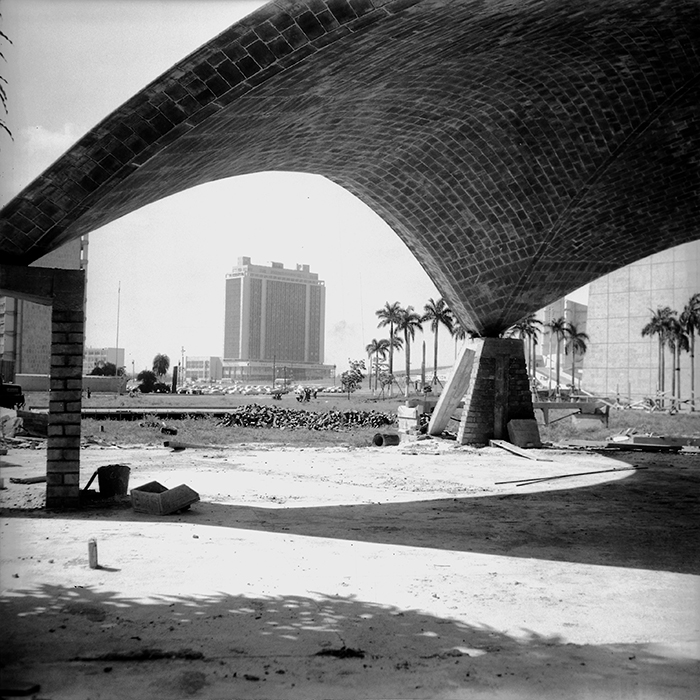Beyond the National Art Schools: Thin-tile vaulting in Cuba after the revolution
Dr Mohammad Wesam Al Asali and Dr Michael H. Ramage, Department of Architecture, University of Cambridge, UK
Dr Dania González Couret, Universidad Tecnológica de la Habana, José Antonio Echeverría, Cuba
Awards RIBA President's Awards for Research 2021
Category History and Theory

The story of the rise and fall of thin-tile vaulting in Cuba after the revolution has always focused on the National Art Schools in Havana, which are typically presented by the scholarly literature as an anomaly in the history of modern Cuban construction. However, this research shows that from 1960 to 1965, a team of architects and engineers at the Ministry of Construction (MICONS), led by architect Juan Campos Almanza (1930–2007), built many experimental structures featuring thin-tile vaulting.
These designs attest to an innovative architectural program that envisioned the systematic use of thin-tile vaulting at a national scale for houses, schools, recreational structures, and industrial buildings. If less monumental than those used at the National Art Schools, these other vaults were no less significant for three key reasons. First, the history of thin-tile vaults in these lesser-known buildings helps us to understand the context of the construction of the vaults at the National Art Schools. Second, the institutional use of thin-tile vaulting by MICONS invalidates the conventional assumption of a divide between the architects of the National Art Schools and their counterparts at MICONS. Finally, by examining the history of a state-led initiative to investigate thin-tile vaults, we can begin to provide a more nuanced account of the history of construction in Cuba after the revolution, and in particular the tensions that supposedly emerged during this period between traditional and prefabricated architecture.
Drawing on extensive research in the MICONS archives, as well as site visits, interviews, and digital modelling, this investigation provides a nuanced account of the history of architecture in post revolutionary Cuba. Thin-tile vaulting in Cuba offered an ingenious and effective solution for a complex range of projects, balancing traditional craft with new technology, allowing for a wide range of different scales, and depending on only local, everyday materials.






